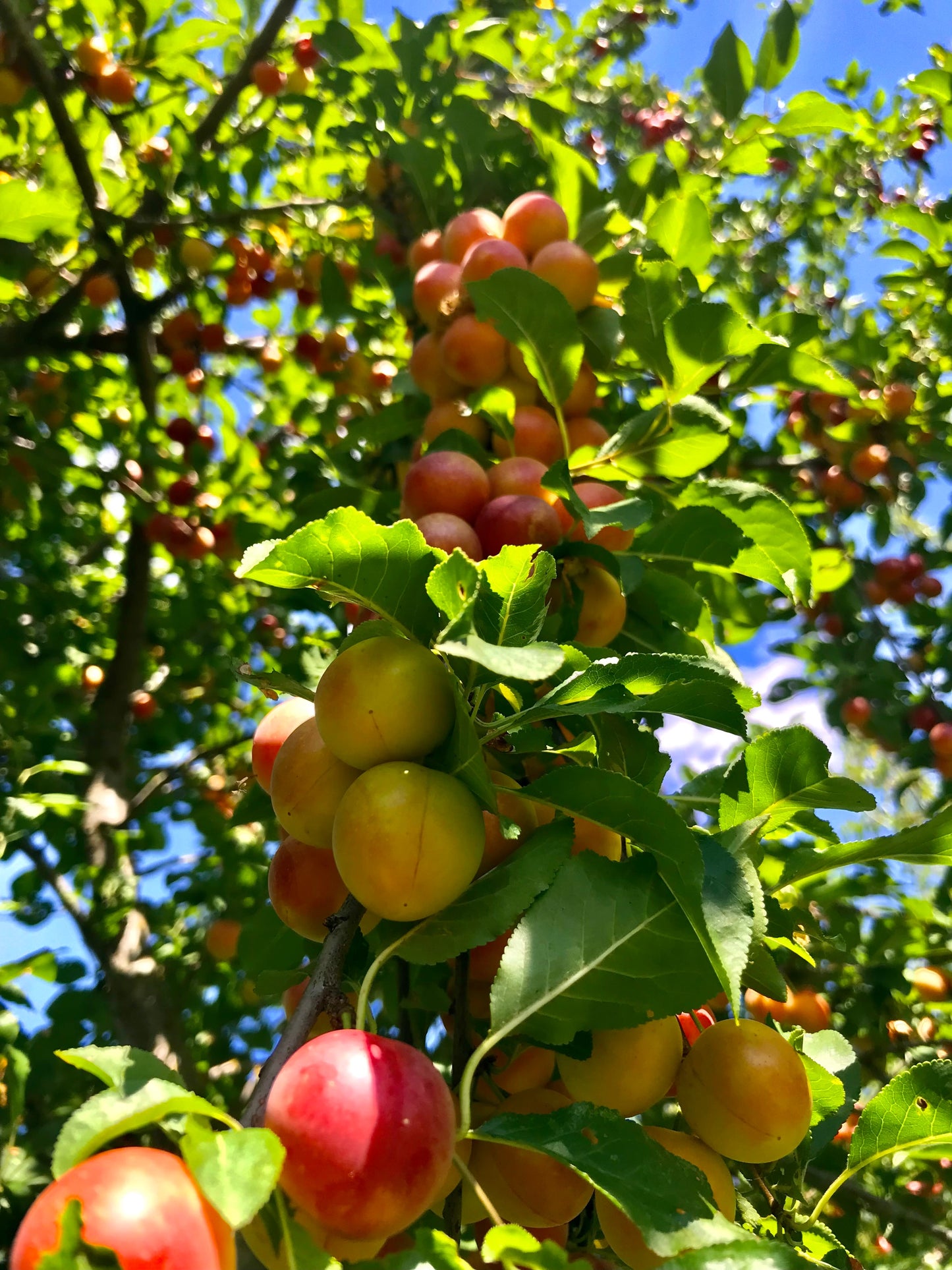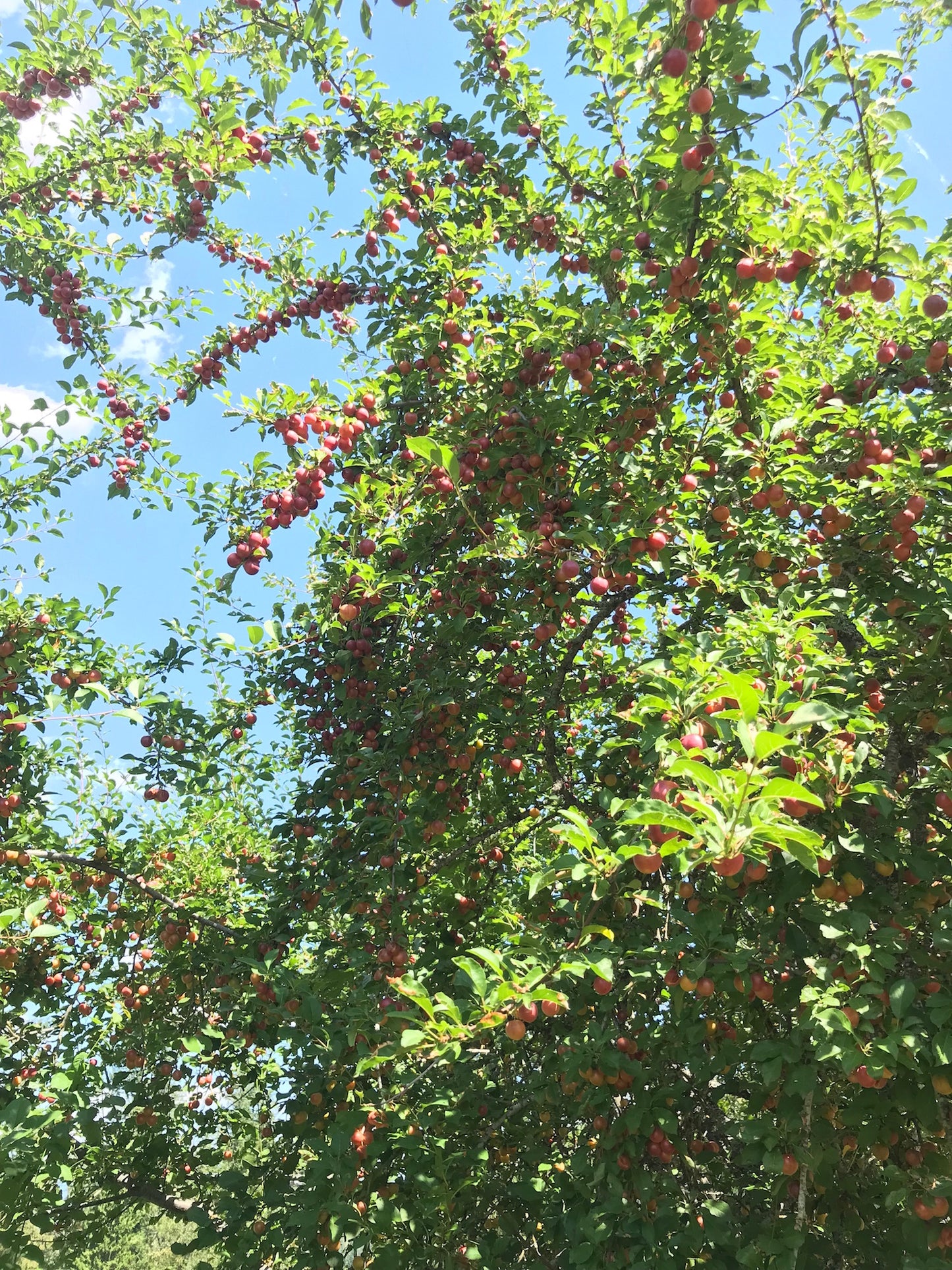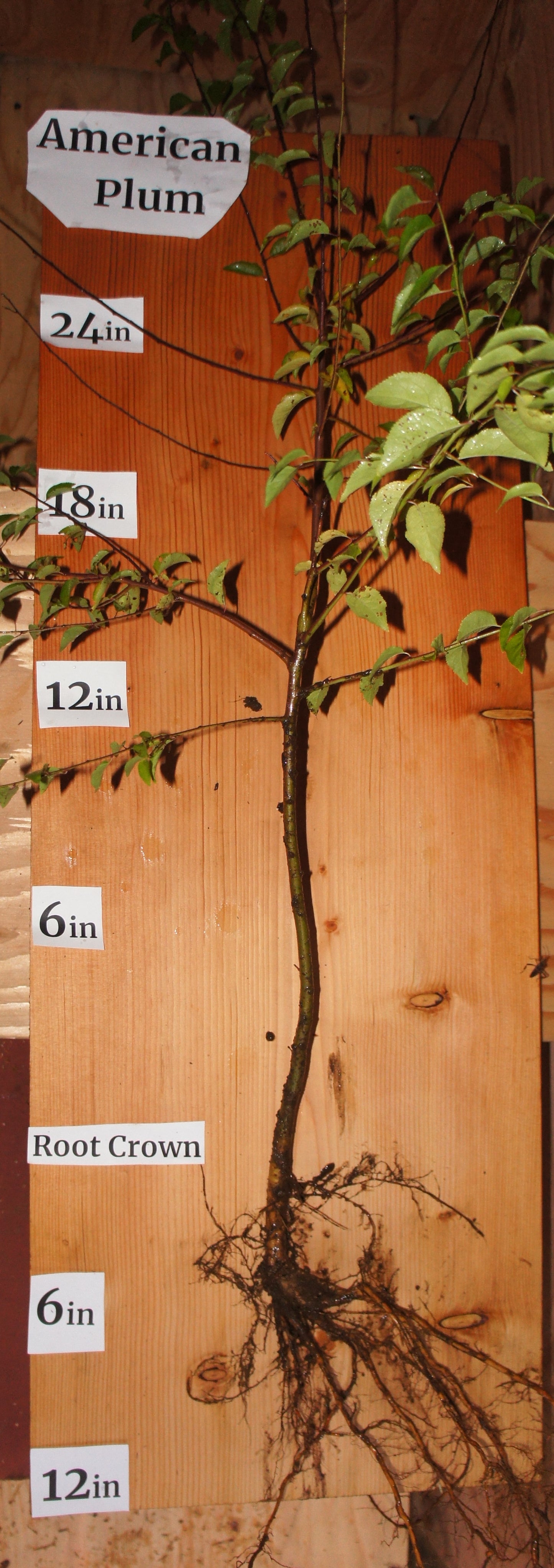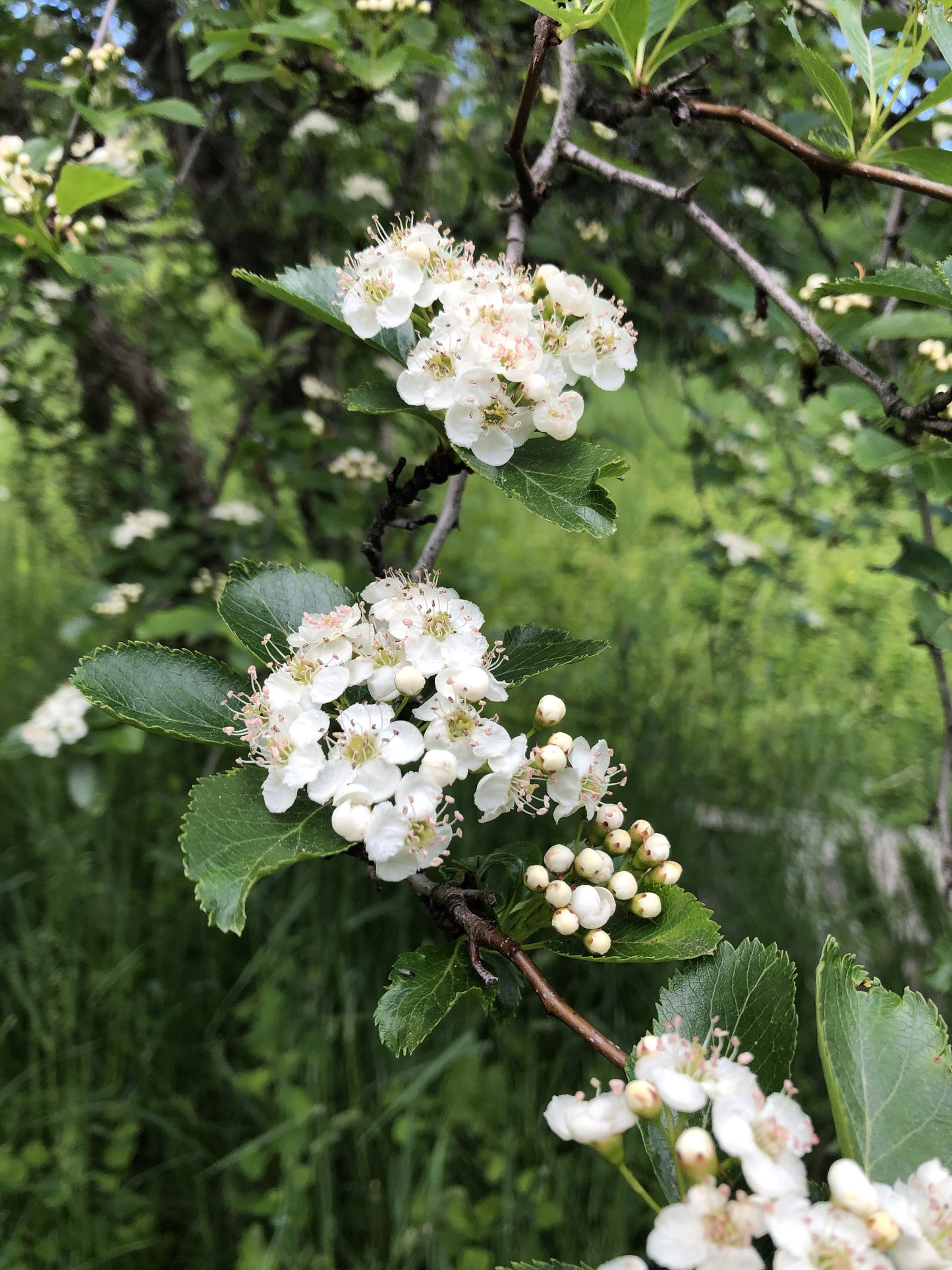American Plum (Prunus americana)
American Plum (Prunus americana)
Couldn't load pickup availability
Special Offers
Why We Grow It
Why We Grow It
We grow the American Plum (Prunus americana) for its exceptional resilience, reliability, and ecological benefits. Unlike many other Prunus species, it is notably resistant to black knot fungus and other common diseases, ensuring healthy growth year after year. Its ability to consistently produce fruit, even in poor pollination years, makes it a dependable choice for both wildlife and human harvests. This native Canadian tree provides vital support to local ecosystems, attracting pollinators with its spring blossoms and offering essential food and shelter to birds, deer, and other wildlife with its dense growth and late-summer plums. With its adaptability and disease resistance, the American Plum is a low-maintenance, high-value addition to any landscape.
How the Plant Grows
How the Plant Grows
Reaching 15–25 feet tall with a spread of 10–15 feet, it forms dense thickets through natural suckering, perfect for erosion control and privacy screens. In spring, it showcases fragrant white blossoms that attract pollinators, followed by lush green foliage in summer and small, edible plums in late summer to fall.
Plant Size
Plant Size
Size at Maturity- Shrub layer. 3-5 Meters
Current Size- Large 2'-3'+ 1 Year Old Seedling
Additional Info
Additional Info
American plum, also called wild plum in North America creates thickets and hedgerows of amazing smelling flowers and delicious fruit. This plum sends up suckers and will slowly spread from its original home unless managed. Fruit is small compared to other plums with tough skin, and very delicious flesh.
The American Plum is a hardy, fast-growing native shrub/tree prized for its versatility and resilience. It produces clusters of fragrant white flowers in early spring, followed by small, sweet-tart plums in late summer, perfect for fresh eating, preserves, or wildlife forage. Its dense growth also provides valuable habitat and food for pollinators and birds. Whether as a stand-alone specimen, part of a hedgerow, or in silvopasture systems, the American Plum offers beauty, sustenance, and ecological benefits year-round.
Share




Plant Highlights
-

Water
Low to medium
-

Pollination
Need at least 2 for pollination, great for pollinating other Japanese and hybrid plums
-

Soil
Prefers well drained soil but isn't too picky. Can tolerate many soil types sand/clay/loam
-

Years to Bear
3-5
-

Hardiness
Zone 3 (-40 C)
-

Solar
Full Sun
Subscribe to our emails
Lots of Free Growing Info. Be the first to know about new plants and exclusive discounts.










